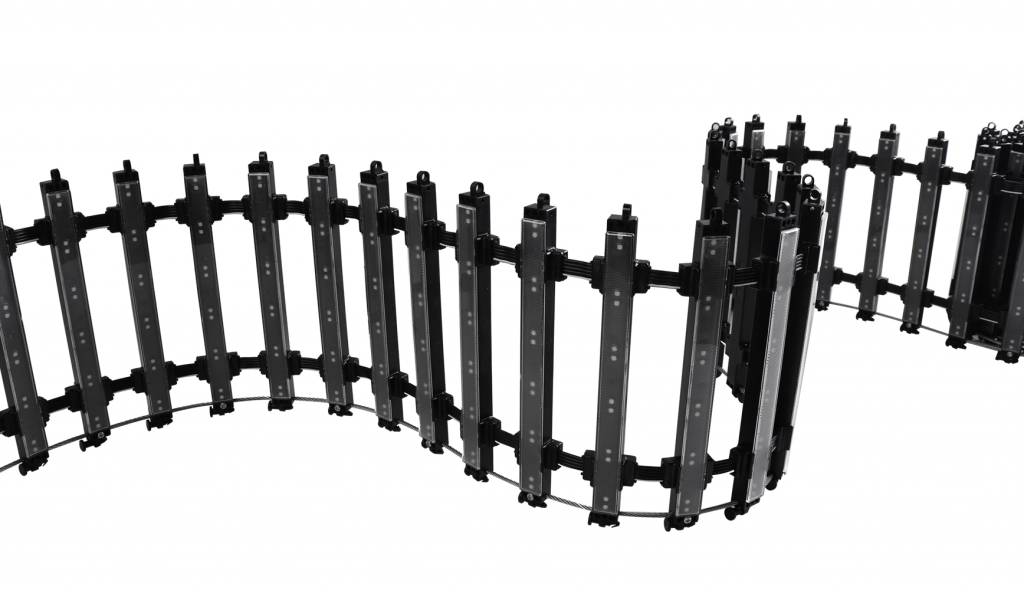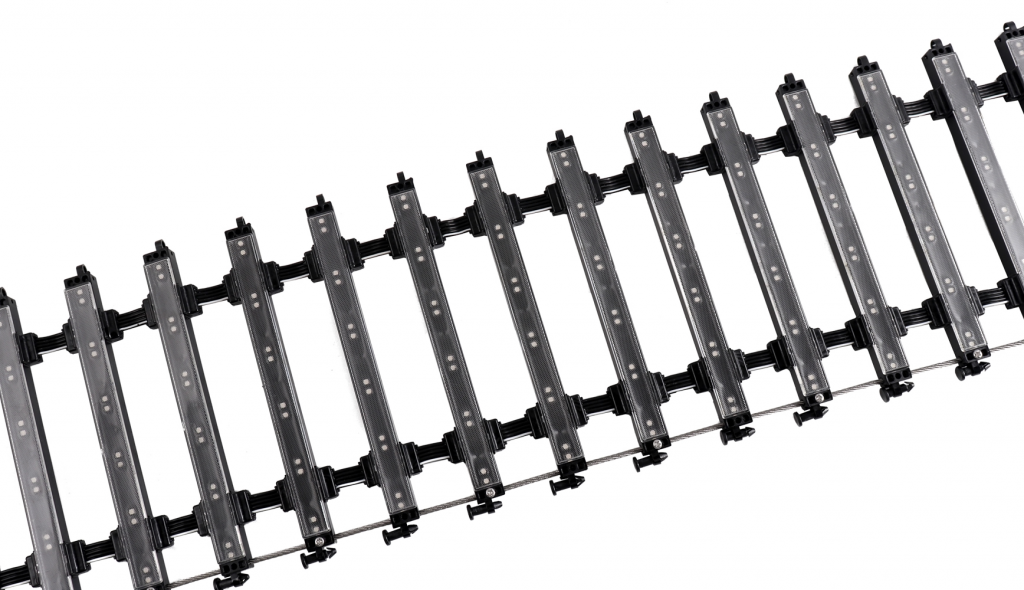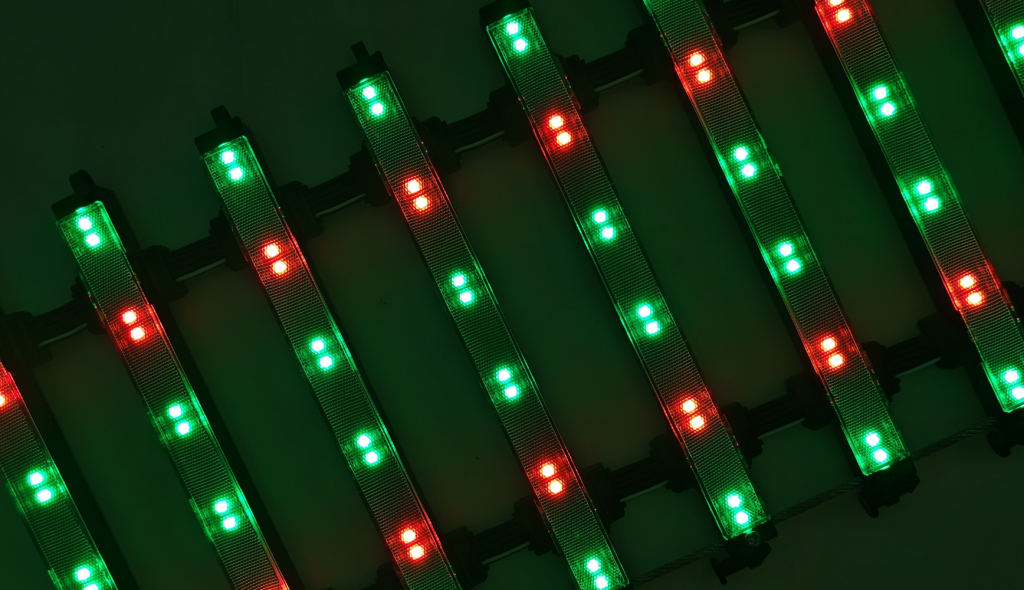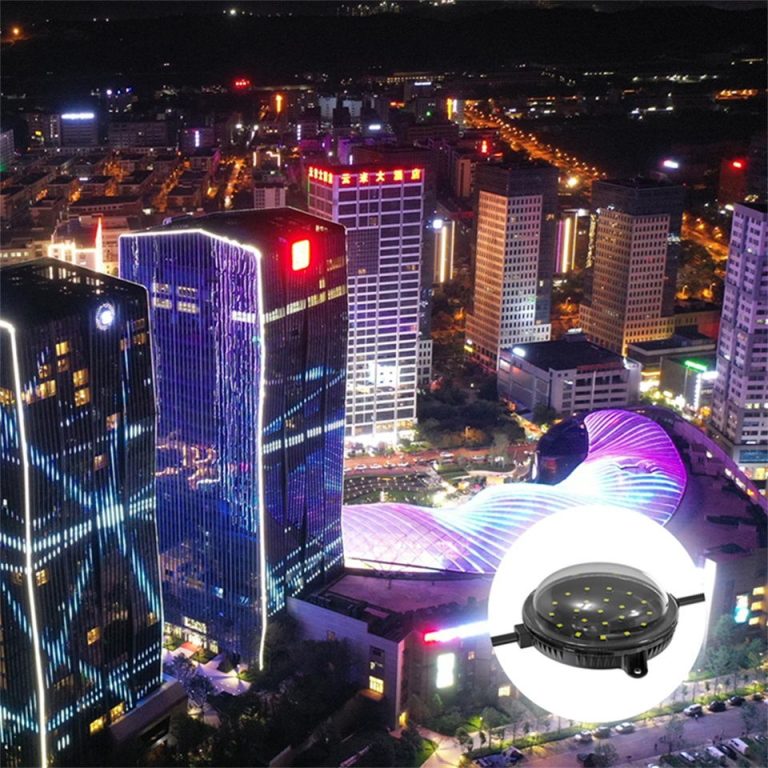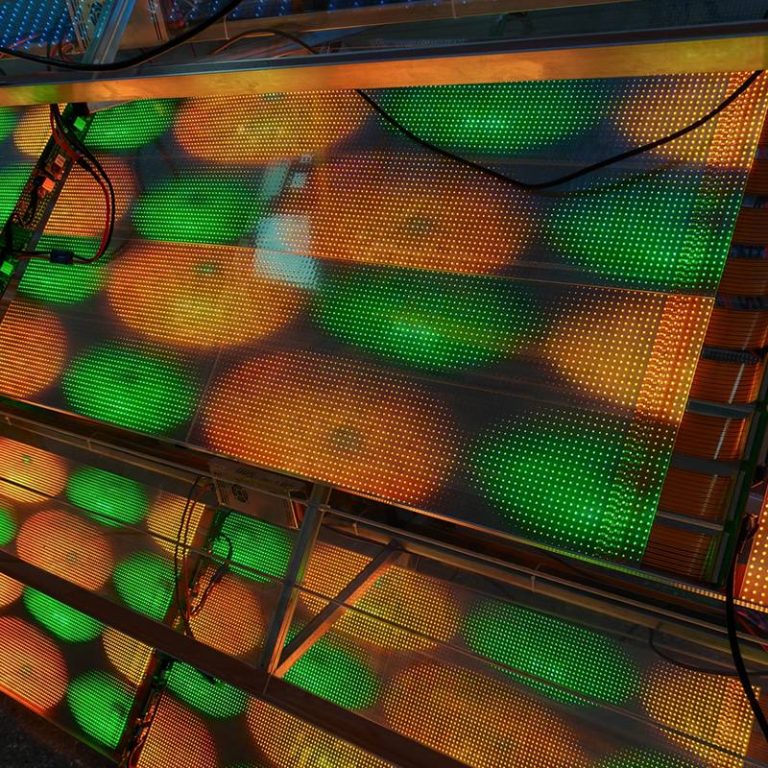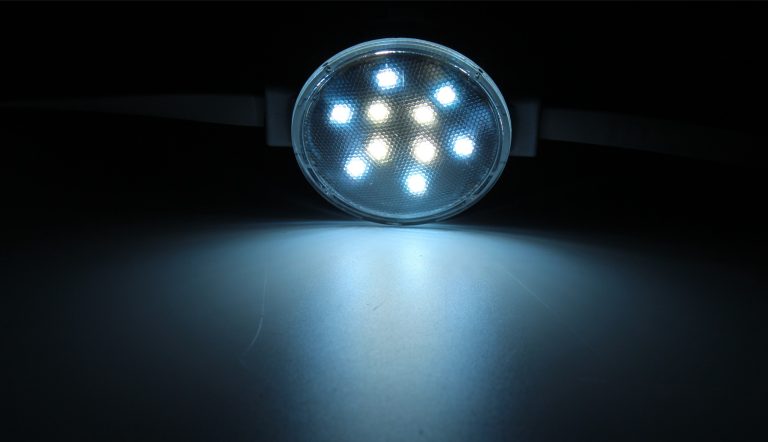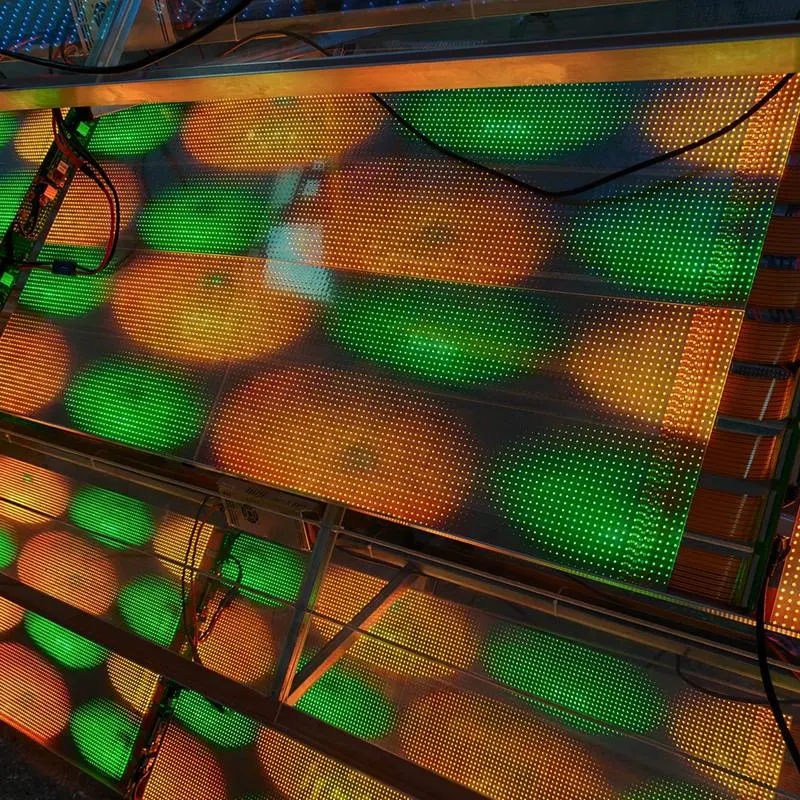
In the busy center of a downtown shopping area, a fancy store ran into a typical problem. The owners wanted to pull in more customers with striking digital signs. But the high price and stiff setup of traditional LED walls seemed too much. They needed a display that could curve around windows. It had to stay affordable. And it shouldn’t mess up normal business. That’s where flexible transparent screens came in. They made the idea work. The setup cut installation costs by about 40%. The storefront stayed clean and welcoming. Tales like this happen often. Businesses hunt for ways to shine in packed markets. The move from bulky traditional LED walls to these fresh options is picking up speed. If you’re thinking about choices for your next display job, knowing the money perks can tip the scales.
This article gets into five main money advantages of flexible transparent screens over traditional LED walls. We’ll lay it out with everyday examples. We’ll back it with real industry numbers. These screens bring value without the common troubles. Are you setting up a shop front? Planning an event? Or fixing up a company entrance? These ideas show why bendability—and see-through quality—brings real payoff.
Benefit 1: Lower Upfront Material and Hardware Expenses
Traditional LED walls call for a ton of parts. Think sturdy frames, thick pixel grids, and modules that eat up power. Those add up quick. A basic 10×10-foot display might cost $15,000 to $25,000 for starters. That’s from fresh reports by display experts. Groups like the International Sign Association put out those figures.
Flexible transparent screens change the game. They use light, net-like OLED or micro-LED sheets. This cuts material use by as much as 60%. You skip the big structural braces. These screens stick to glass or frames with easy clips or glue. Look at a medium conference hall in Chicago. They ditched a heavy LED wall for transparent screens last year. The change saved $8,000 on parts alone. That left room in the budget for special videos. Those grabbed the crowd’s attention.
Tight on room? These screens roll up like cloth. So shipping and storage fees drop too. It’s simple math. Less metal. Fewer wires. And a total that doesn’t balloon.
Benefit 2: Reduced Installation and Labor Costs
Imagine putting up a traditional LED wall on a crowded expo floor. Tech crews spend days lifting panels. They tweak alignments. And they fight tangled wires. That often hits 50 or more hours at $100 each. If the space has odd angles or rush times, holdups stack up.
Flexible transparent screens make it smoother. Their pliable build lets one or two workers finish in under four hours. They use magnetic hooks or stretch setups that click right in. Data from AVIXA points to 70% less labor for transparent jobs than stiff walls. Back to that Chicago spot. Their team wrapped it in one afternoon. No extra pay. The event started right on time.
On top of that, little interruption means solid savings. Shops stay open. Staff keep their heads in the game. Money keeps coming in. No long closures needed.
Quick Comparison: Installation Time Breakdown
| Aspect | Traditional LED Walls | Flexible Transparent Screens |
|---|---|---|
| Setup Time | 2-5 days | 2-4 hours |
| Crew Size | 4-6 people | 1-2 people |
| Tools Needed | Cranes, lifts, drills | Basic adhesives, levels |
| Average Labor Cost | $5,000-$10,000 | $500-$2,000 |
This chart highlights the speed difference. It’s not only quicker. It’s sharper for groups handling lots of work.
Benefit 3: Energy Efficiency That Pays Dividends Over Time
Electric bills hit display folks like a quick rain. Traditional LED walls suck down juice. They run 300-500 watts per square meter. For a small setup, monthly charges top $200. Over 12 months, that’s thousands gone. Especially in round-the-clock spots like shopping centers or gaming houses.
Flexible transparent screens use way less. With up to 80% light pass-through and smart backlights, they pull just 100-150 watts per square meter. A U.S. Department of Energy look at business displays figures yearly cuts at 50-65% for clear tech. Take a Las Vegas hotel front desk. They switched in 2023. Costs fell from $1,800 to $700 a month. They got their money back in less than 18 months. And they trimmed waste gases. That’s good for the wallet and the planet.
These screens also handle room light well. So you cut extra lamps. Running dimmer keeps things cool. Fans stay quiet. Lifespans stretch out. No endless buzz from strained gear.
Benefit 4: Easier Maintenance and Fewer Repairs
A part breaks on a traditional LED wall? It’s major work. Tear down sections. Hunt for hard-to-find fixes. And hope the gap doesn’t drag. Each repair? $2,000 to $5,000 easy. Weeks without show if parts lag. Shakes or warmth speed up the damage in busy areas.
Flexible transparent screens go for easy fixes. Their piece-by-piece, sheet-style build lets you handle spots fast. Peel a bit. Patch it. Back online in minutes. Newer ones have self-mend layers for small nicks. On-site crews say fix needs drop 75%. Bills stay under $500 each time. That Vegas front again. After setup, service hits went from every other month to once a quarter. They pocketed $3,000 a year in fees.
Here are some clear upsides in bullets:
- Fast changes: No total stops. Hit just the snag.
- Tough sheets: Hold off color loss and grit better than solid boards.
- App checks: Lots link to phones for heads-ups. Catch trouble early.
It’s upkeep that matches a quick world. Not the reverse.
Benefit 5: Scalability Without the Price Surge
Growing a traditional LED wall? You basically restart. Grab extra pieces. Beef up frames. And get ready for costs that climb wild. Double the area? Your spend might triple. Custom work and extra weight drive it up.
Flexible transparent screens grow smooth. Tack on sections without fuss. Curve into edges or layer for wrap-around feels. All at a straight-line bump of 20-30%. Sound pros in AV say stretching a 50-square-foot job to 100 runs 1.5 times the price. Not 2.5 or 3 like stiff ones. Picture a quick fashion show in New York. Planners started with glass signs. Midway, they went full-store cover. Added just $4,000. Not the $12,000 overhaul they feared.
This fit works great in shifting spots. Think store busy times. Company makeovers. Change hits often. But cash doesn’t always follow.
Spotlight on XinHe: Your Go-To Supplier for Flexible Transparent Screens

Leading this shift is XinHe. It’s a solid pick in fresh display gear. They focus on flexible transparent screens. These mix top tech with down-to-earth builds. XinHe makes items like the Miracle Bean LED Point Light series. They’re IP67 tough for long hauls. And DMX-ready for easy runs. From wall covers to yard highlights, their range stresses exact work. RGB 5050 LEDs give bright pops. Stereoscopic soft glow adds that special touch. Crystal-sharp P4 spacing keeps sights crisp. XinHe’s drive for top-notch shows in each piece. Their ODM/OEM know-how shapes fits to your specs. Lighting a big site or a home spot? Their screens give steady work without extras.
Wrapping It Up: Why the Switch Makes Sense Now
Flexible transparent screens go beyond hype. They’re a wise turn for money-smart display hands. From trimming start costs to lightening upkeep loads, these five edges build to true cash ease. Often 30-50% less spend in the first two years. That’s from pooled real-job reviews. In times where bucks matter most, dropping stiff traditional LED walls for bendy needs feels plain right. Not a big leap. If your work calls for switch-up without ties, now’s the hour to see how these can shift your game.
Frequently Asked Questions
What are the main cost benefits of flexible transparent screens over traditional LED walls?
The big five cover cheaper parts, faster setups with slimmer crews, sharp power cuts, simple fixes, and smooth growth. These can shave 40-70% off bills. It depends on the build.
How do flexible transparent screens cut installation costs compared to traditional LED walls?
They stick with light hooks and bendy fits that hug shapes in hours. Not days. Crew needs shrink. One worker beats a squad. That saves thousands on large runs.
Are energy savings a big deal with flexible transparent screens versus traditional LED walls?
You bet. They sip half the juice or less. So bills shrink quick each month. For non-stop shows, that’s hundreds tucked away yearly. And a cleaner mark.
Can flexible transparent screens really scale without jacking up costs like traditional LED walls do?
Sure. They add bits piece by piece at way lower jumps. Grow as you go. Budgets climb steady. Perfect for changing shows or shops.
How does XinHe fit into choosing flexible transparent screens over traditional LED walls?
As a straight-shot maker, XinHe brings custom picks like IP67 Miracle Bean lights. They mix low cost with sharp tools. So you grab those money wins from day one.

